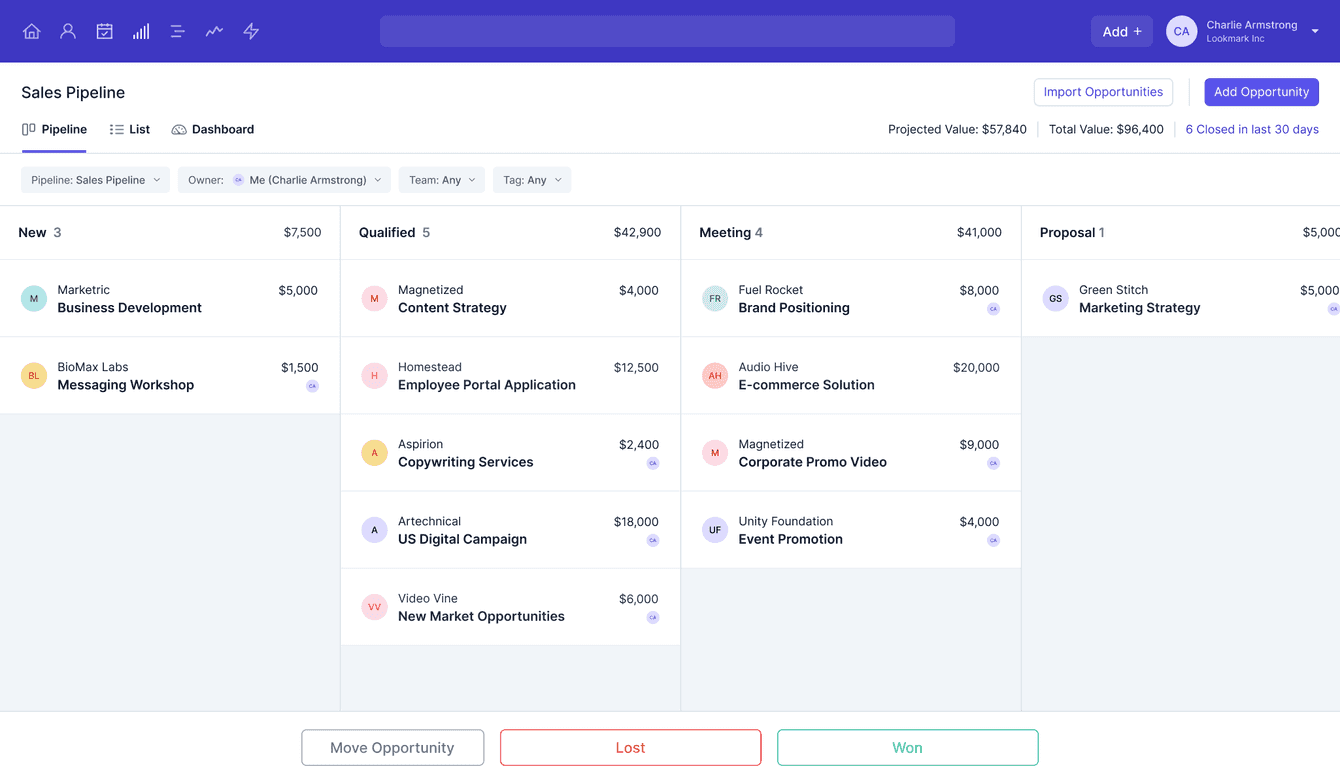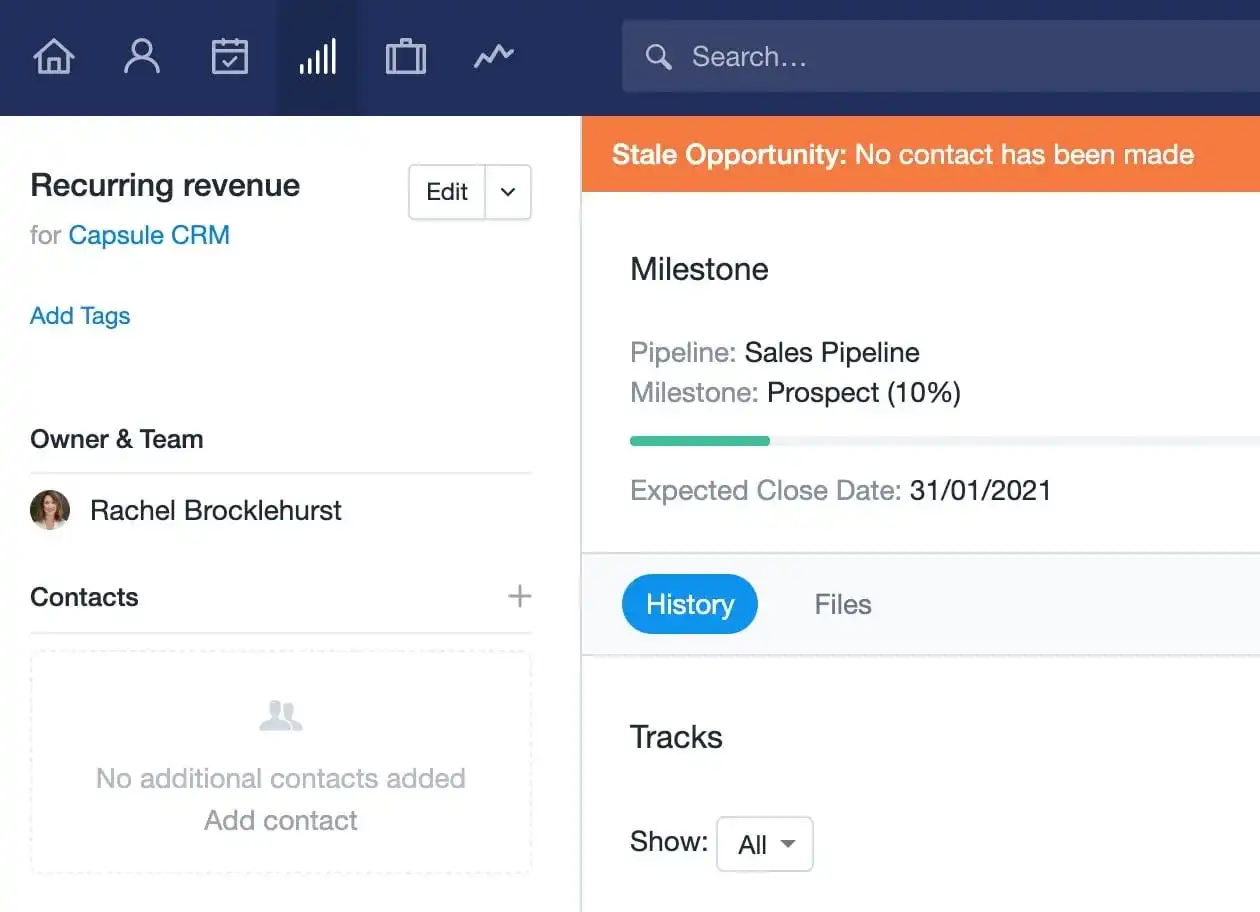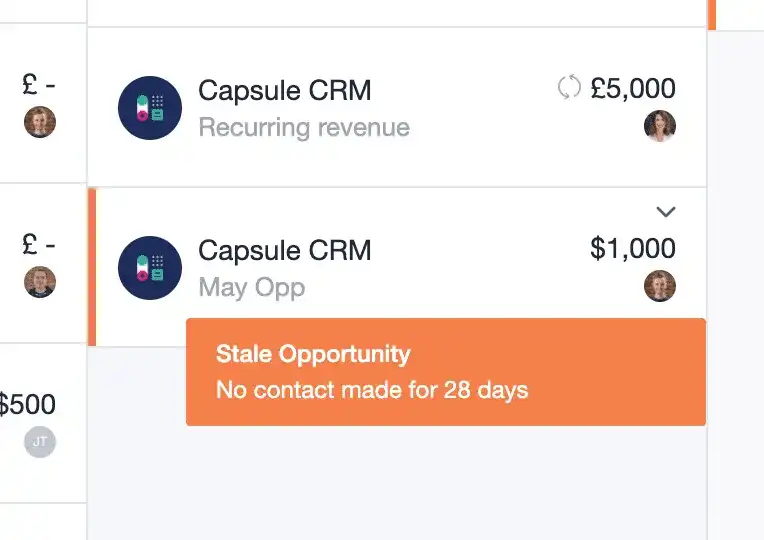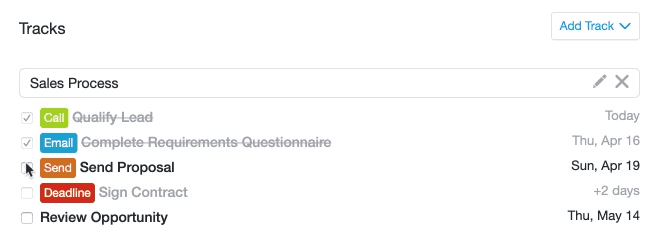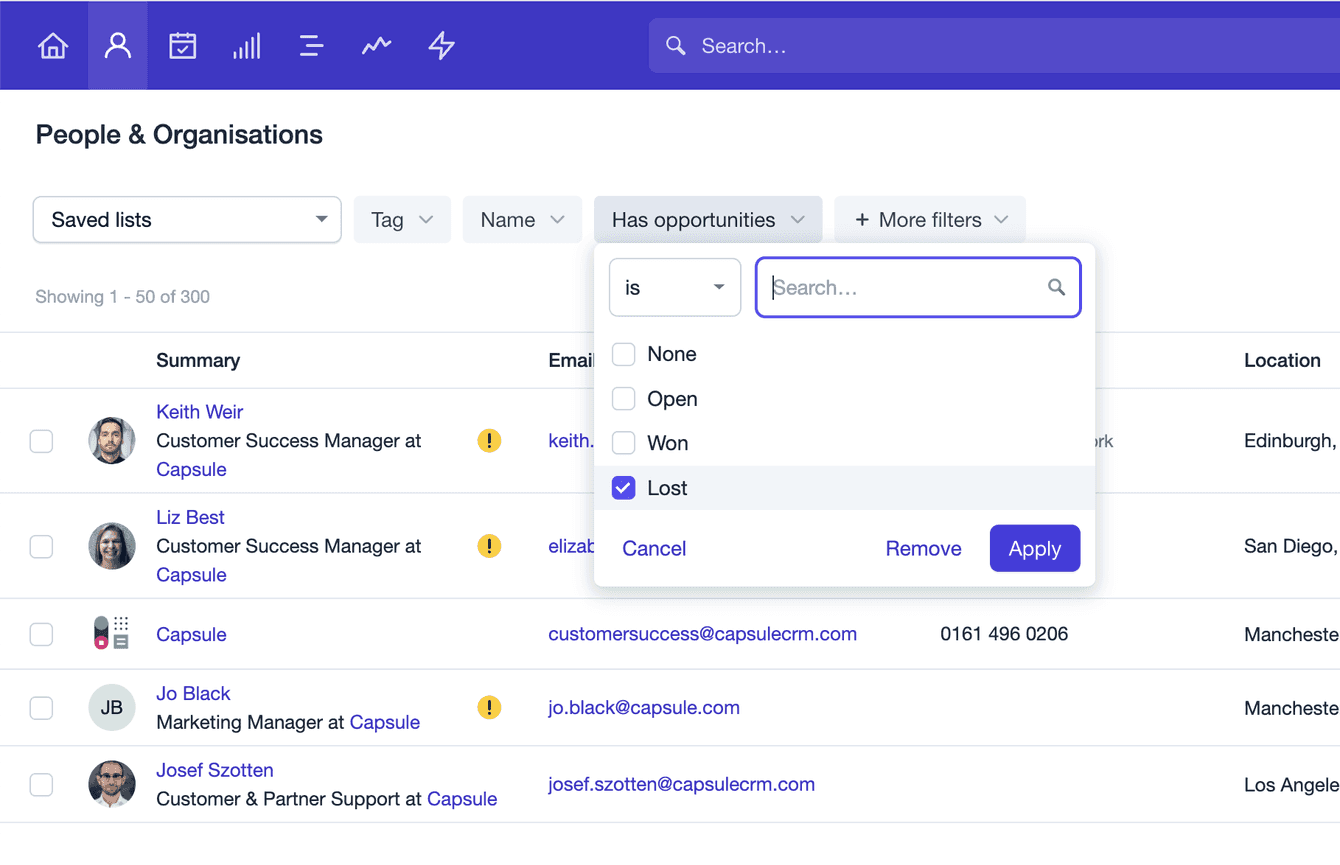For many growing businesses, expanding into international sales is a logical step. In 2021, the B2C cross-border online shopping sector was valued at roughly $785 billion; by 2030, it’s expected to reach $7.9 trillion. However, effectively tapping into the global market involves more than just adding a currency converter to your checkout page.
From navigating cultural differences to adapting your sales strategies for each region, there are plenty of challenges in global sales. Businesses often struggle to manage an efficient sales pipeline that accommodates different buying behaviors and regulations across borders, leading to missed opportunities and wasted resources.
In this article, we’ll examine some of the bigger obstacles in global sales along with the key strategies to overcome those challenges. We’ll also look at how you can set up your sales pipeline, taking international sales teams and customers into account.
The impact of globalization on sales strategies
Global sales used to be only possible for large enterprise businesses, but e-commerce has obliterated many of the barriers. Platforms like Shopify and BigCommerce mean small businesses and startups can reach customers worldwide. However, this democratization of global sales has led to a surge in competition, meaning businesses must work even harder to differentiate themselves in a crowded market.
Even if you can successfully stand out from the countless competitors, you still need to consider each market’s requirements. Every country or region has its unique blend of cultural, economic and regulatory environments. Consumer preferences can vary dramatically across borders, often requiring businesses to extensively revise their offers and sales strategies.
For example, a direct approach may work well in some countries, while others respond better to relationship-based sales.
Emerging markets, in particular, represent both a significant opportunity and a challenge for global sales. These regions often exhibit high growth potential but may also present hurdles such as less developed infrastructure, greater political and economic volatility and lower consumer purchasing power.
A seemingly small change in one part of the world can have a butterfly effect in another region, having an immediate and significant impact on your international sales strategies.
Businesses must remain agile, continuously adapting their approaches to stay competitive and capitalize on any emerging trends.
Key strategies for building effective global sales teams
Building a global sales team requires a deep understanding of cultural differences, localized sales strategies and a commitment to ongoing training and development. Here are some ways your business can navigate the technicalities of international sales:
Understanding cultural nuances
Thanks to the internet, we can now instantly connect with people from all over the globe in a whole new way. For businesses, the global marketplace is a tapestry of different cultures, each with its own values, communication styles and business practices. It opens up new opportunities, but it also introduces new factors you’ll have to consider.
Where possible, one of the more effective ways to sell within different regions is to hire sales representatives from your target markets. Local professionals have an intrinsic understanding of those subtle differences in business etiquette and consumer behavior that can significantly enhance your sales.
As you better understand the market, you’ll need to tailor your approach, adapting your product offerings, marketing messages and even sales techniques to fit the local context. This involves more than literally translating content into the local language; you need messaging that customers can relate to, that speaks to their specific aspirations and pain points.
Whether you’re working with local talent or not, still take time to research that market’s culture and community. Little things like knowing when the local holidays are, how long the average business day lasts or even when people clock off for lunch can all significantly impact your sales outreach.
Samantha Bonanno, a Senior Specialist Analyst for Gartner Digital Markets, recommends accounting for time zones when dealing with inbound leads. “All good sales professionals know that not responding to a lead within the first five minutes of receiving it makes it 10 times less likely that you’ll get in touch with them at all.
“This can make international sales tricky, if leads are coming in outside of your team’s domestic working hours. Adopting a tool like marketing automation software helps you follow up on inbound opportunities regardless of when they come in.”
Training and development for international sales
Continual training and development are important in any high-performing sales team. For international sales teams, that training needs to be further expanded to account for the added challenges.
As with any sales team, every team member must be an expert on your product or service. When selling in different regions, include training on any variations specific to that market. This confidence in the product allows for more persuasive and authentic sales conversations.
Ensure your team is also up to date on the sales landscape in the region. For example, a competitive analysis helps your reps know the strengths and weaknesses of known competitors. Details on the latest market trends can help your team understand the bigger picture and how your product fits into the customers’ lives.
Your training programs should include details on any cultural nuances you’ve uncovered (see above). Cover all the basic do’s and don’ts in business settings, understanding communication styles (direct vs. indirect, high-context vs. low-context) and how to manage negotiations respectfully and effectively.
Technology and tools for global coordination
The right technology can significantly enhance the efficiency and effectiveness of your international sales teams, enabling seamless communication, collaboration and data sharing across different time zones.
Tools like Slack, Microsoft Teams and Zoom can help keep you connected, regardless of location. These platforms are ideal for real-time communication and collaboration, making it easier to share insights, solve problems and maintain a cohesive team dynamic. They also all have features for asynchronous communication, so you can collaborate without being in the same time zone or feeling the pressure to respond immediately.
A robust customer relationship management (CRM) system is essential, allowing you to track and nurture relationships with your customers wherever they are in the world. Identify platforms that can be customized to reflect different processes across regions, along with relevant features like multi-language support and currency conversion.
Adjust your CRM to reflect the unique sales stages that each regional team goes through, so you can accurately track progress and identify any bottlenecks or opportunities for improvement. You can also use workflow automation to nurture leads consistently across all stages of the sales process, adapting communication frequency and messaging to match local market preferences.
By integrating these key strategies into your global sales approach, you can build a resilient and adaptable sales force.
How to build pipelines for global sales
A sales pipeline helps your team visualize the sales process and prompt them on the next steps, which is invaluable when dealing with different markets and international customers. Here’s a step-by-step guide to setting up a sales pipeline that’s optimized for global sales teams.
Step 1: Define your global sales stages
Every pipeline is made up of different stages that reflect your customer’s journey. For global sales teams, having the right stages in your pipeline ensures you have a clearly defined roadmap for managing your leads and deals across different regions. It helps provide consistency when you need it most, so all your sales activities are executed properly and can be reviewed for future optimization (more on that later).
To get started, analyze your sales process and identify the key milestones and actions that every prospect has to go through to become a customer. Align these with your overall sales strategy to establish a set of stages that accurately reflect how sales progress from lead generation to closing.
For this step, focus on the stages that are the same across all markets. For example, the default pipeline in Capsule is:
- New
- Qualified
- Meeting
- Proposal
- Negotiation
- Contract
This is suitable for the majority of sales teams but, if there are different stages you want to include in your pipeline, you can easily change this to match your process.
Step 2: Customize your pipeline for each market
Each market has its own cultural, economic and regulatory landscape, which can affect how sales are made. Customizing your pipeline for each market means that your sales process will still be relevant and effective, increasing the chances of success in different environments.
Carry out some market research to understand the unique characteristics of each target market. Modify your sales stages for each target market to address local business practices, decision-making processes, and customer expectations. This may involve adding steps for regulatory compliance or removing steps that don’t fit a particular market.
In some cases, you may need to set up multiple pipelines (available in Capsule on Growth plans and higher). However, if the process is largely the same with only minor differences, you can use the same pipeline but with different tags for segmentation.
You can also set up custom fields for your opportunities to confirm your sales team is collecting all the information they need to move the deal through the pipeline.
Step 3: Develop clear criteria for each stage
What separates your sales stages? This is obvious in some cases, such as prospects only moving to the “Proposal” stage when you’ve sent over a proposal. However, sometimes this can be more ambiguous. For example, how do you define a qualified prospect? Who makes that decision?
Having straightforward criteria for moving opportunities through the sales stages prevents deals from stagnating and helps everyone on the team use a consistent approach.
For each sales stage, define specific, measurable actions or achievements that qualify a lead to move to the next stage. These criteria should be based on customer actions, engagement levels or other key performance indicators (KPIs) that signal the prospect is ready to advance.
In turn, this clarity contributes to more accurate sales forecasts and allows you to identify potential issues before they become too serious. In Capsule, opportunities can be automatically flagged when they haven’t been contacted in a predefined amount of time, entirely customizable to each milestone, so you can easily see any prospects that need to be followed up on.
Step 4: Add relevant tasks and automation
Trying to manage different regions with different requirements is often time-consuming, and missing just one small step can have disastrous consequences. By using the above information, you can create standard task lists to help your reps manage each opportunity in line with your best practices.
Workflow automation comes in useful here, allowing you to reduce repetitive tasks and keep deals moving smoothly, even when you’re in different markets or time zones
Identify low-touch tasks and processes within each stage of your sales pipeline that can be automated, such as follow-up emails or lead qualification. Use your CRM’s automation features to implement these, freeing up your sales team to focus on more strategic activities.
Capsule’s Tracks feature allows you to create a template of tasks that need to be created for each stage, such as calling a prospect or sending a follow-up email. You can then use automations (available on Growth plans and higher) to automatically add the relevant track when opportunities are added to the pipeline or move to different stages.
Step 5: Monitor and optimize pipeline performance
One of the biggest advantages of following a set sales pipeline is the ability to look back and see where you can make improvements. By continuously monitoring your pipeline and its performance, you can identify any inefficiencies or bottlenecks.
Use your CRM’s analytics and reporting features to track sales metrics for your pipeline, then use what you’ve learned to make any necessary to your sales process and optimize your strategies for better results.
By regularly reviewing your pipeline, you can also spot any missed opportunities. Capsule enables you to create custom dynamic lists based on any criteria you choose. For example, you can filter for opportunities that were lost due to timing. You can then follow up with those prospects at a later date to see if now is a better time.
Successful sales all over the world
Creating a sales strategy that’s effective across different regions and diverse markets isn’t always simple. It takes time to properly research your markets and understand what approach will work best. You might have to significantly adapt your offers, messaging and even your fundamental sales process.
However, by putting in the effort and making smart use of technology, global sales represent a huge opportunity for growing businesses. With a pipeline that’s tailored to international sales, you can ensure that your sales teams have everything they need to close more deals.
Discover how a CRM can help your business launch and optimize an effective global sales strategy. Enjoy Capsule’s free starter package or start a 14-day free trial and see how Capsule’s features can help you drive more revenue across multiple regions.

